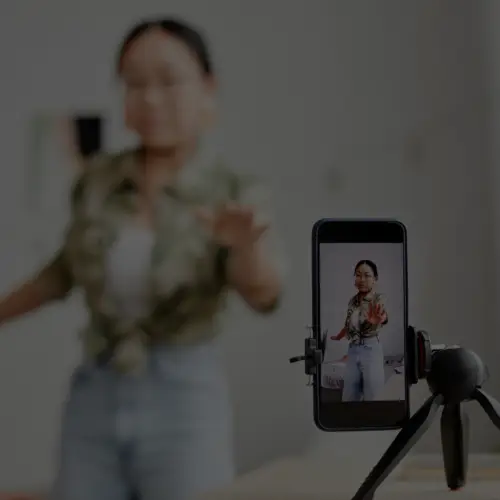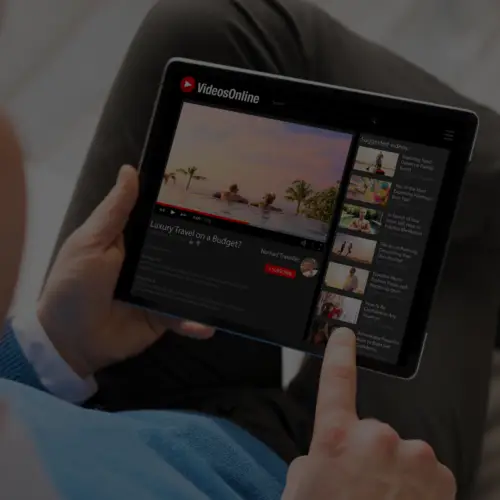29 Jul Marketers Don’t Really Believe in Social Media…Yet!
I was watching the excellent ESPN documentary Fab Five recently and it reminded me about true disruption. Five freshman players at Michigan, led by Coach Steve Fischer, truly changed the nature of college basketball in ways that can still be seen today. The team broke new ground in playing five freshmen players, bringing a new style of play and even altering the interaction of sports and fashion. Disruption of the college basketball game caused all teams to fundamentally approach the game in a different way. Talented freshmen for instance, have a disruptive impact on the overall success of teams that can bee seen in Kentucky’s perennial success and that six of the top 10 players in the 2014 draft were freshmen (more if you count International players).
 Social Media has disrupted the media industry somewhat, yet not to the extent you might expect. At $2.9 billon, social media spending is less than eight percent of the total digital pie. Unlike other Digital media, marketing dollars have not migrated to social channels in large amounts. Google’s revenues are larger than Facebook, Twitter, Linkedin and Pinterest combined, over four times as large in fact and this number is much higher if you only account for social media spending, not search, retargeting or display on social sites which account for the bulk of revenue. A large share of Google’s revenue growth has come from disruption of other less efficient media such as print and digital display media, so why is social lagging?
Social Media has disrupted the media industry somewhat, yet not to the extent you might expect. At $2.9 billon, social media spending is less than eight percent of the total digital pie. Unlike other Digital media, marketing dollars have not migrated to social channels in large amounts. Google’s revenues are larger than Facebook, Twitter, Linkedin and Pinterest combined, over four times as large in fact and this number is much higher if you only account for social media spending, not search, retargeting or display on social sites which account for the bulk of revenue. A large share of Google’s revenue growth has come from disruption of other less efficient media such as print and digital display media, so why is social lagging?
 Considering that social media is now so distracting, people are having trouble paying attention to TV, the king of media attention, it doesn’t seem that social is getting its fair share. CMOs have reported for years their intent to dedicate more dollars to Social Media and yet investment in the category has barely budged. Social Media spending has hovered between seven to eight percent of total brand marketing spending since 2012. Instead, more investment has migrated to paid media such as digital display, programmatic buying and retargeting, and one way messaging vs. conversational media. This is interesting given the engagement rates of digital media and mobile where up to 50 percent of clicks are likely accidental (or even worse, bots and fraud).
Considering that social media is now so distracting, people are having trouble paying attention to TV, the king of media attention, it doesn’t seem that social is getting its fair share. CMOs have reported for years their intent to dedicate more dollars to Social Media and yet investment in the category has barely budged. Social Media spending has hovered between seven to eight percent of total brand marketing spending since 2012. Instead, more investment has migrated to paid media such as digital display, programmatic buying and retargeting, and one way messaging vs. conversational media. This is interesting given the engagement rates of digital media and mobile where up to 50 percent of clicks are likely accidental (or even worse, bots and fraud).
Newspaper and print still account for over $30 billion in annual spending however, efficiency, in terms of reach and time spent, declines by the day. There is a huge disruptive opportunity for providers of Social Media. What will it take to change marketer’s behavior and spending habits?
Here are three approaches that will likely help move marketing investments into social media channels.
Make it Easy.
Many marketers I interact with tell me that the amount of effort to manage social media marketing is not worth the return. They either don’t have the time, expertise, staff or investment needed to create great social programming and interaction at scale. Additionally, while many might now have a large numerical audience in the form of likes and followers, they find it very difficult to get engagement without large ad buys, particularly on Facebook. For investment to grow, there has to be a much simpler and more predictable way to deliver targeted audience engagement. Like all media, the right partner is critical (hint, hint), you wouldn’t make your own TV ads would you?
Create New Types of Content Production.
Nothing drives social media engagement like content and the amount of content needed to connect with consumers across ever fragmenting social channels is astounding. Fresh and relevant content is needed every day in formats that are relevant to the social channel (simply reposting across channels typically results in poor performance). A carousel of content is needed to fill this pipeline including premium, influencer, curated and UGC. For best results, using a content blend drives higher levels of overall audience interaction.
Focus on Engagement vs. Reach.
Likes and fans do not drive engagement, especially if they were bought, attracted by offers or sweepstakes or collected via like-gating other content. As the competition for social eyeballs grows due to the overall amount of content available, engagement rates are plummeting to match that of display media. Very little branded content is achieving an engagement rate exceeding one percent of total audience and it is likely that trend will continue. Great social engagement needs expert community management coupled with remarkable content that is meaningful to the audience.
Social Media will continue to move sideways in terms of brand investment until these challenges are fully addressed and measured in a way that clear benefits to the bottom line can be proven. Which media companies will start five freshman, don baggy shorts and black socks, and change the game remain to be seen. The Fab Five were 23 years ago. They signaled the seismic change, but it didn’t occur overnight. Neither is social. Social is trending the right way for marketers. We just need the discipline and the data to make it the new norm over time.







